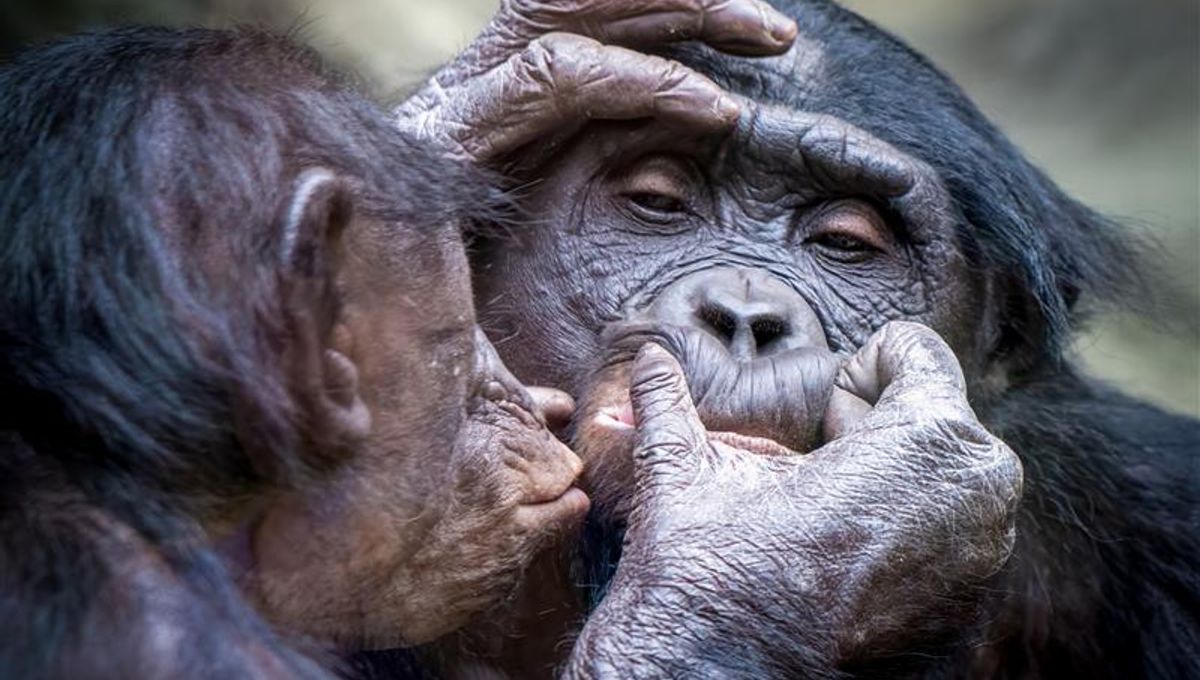
We’ve all been there: You’re on a date with someone, it’s maybe the second or third time you’ve met up, and everything’s going well. Then, as it’s time to part ways, the tension starts to mount. Furtive looks are shared, maybe some blushing, and eventually one of you takes the plunge – you stick your finger in the other person’s eye to show them just how much you like them. Oh wait, that’s what capuchin monkeys do.
If you’re reading this, you’re probably a human, which means you probably don’t do this but rather share your affection by way of a kiss. But as this example shows, kissing is not something all primates do. So where does it come from?
Kissing is a rule-based practice to be sure. There is a time and a place for the act and there are deep socio-cultural rules established over time that dictate who can kiss who and how it should be done, depending on the culture.
For instance, the Romans had several ways of kissing that played different roles depending on the context – the osculum was a kiss on the cheek that signified social and familiar affection (not romantic); the basium was a kiss to the lips that signified close relationships between family members or lovers, but had no sexual connotations; and the savium, a kiss on the lips that communicated erotic, sexual desire between partners.
In contemporary Latin Europe, two kisses across the checks can be used as a greeting between women and between opposite sexes (though not man-to-man, as they shake hands), but there are regional variations on this too. In other instances, kissing a ring, someone’s hand, or their feet is a sign of respect, especially within ceremonial or religious contexts. And then there are the kisses we share on specific occasions, like at a wedding, a birthday kiss, New Year’s kisses, and kissing under the mistletoe.
Kissing is clearly a versatile method of showing affection, intimacy, and respect – but researchers are still unclear on how kissing became so important to our species. Some have argued that its origins lie in nurturing care behaviors between a mother and their nursing infant or in pre-mastication when a caregiver feeds an infant with pre-chewed food. Others have suggested kissing could be a kind of compatibility test, where it acts as a way to sniff or taste a potential mate’s microflora to determine their genetic health.
When seeking parallels within the animal kingdom, finding behaviors that match the form (lip protrusion, suction movement) and function (bonding between relationships of different types) of human kissing is not easy. Some animals do engage in nuzzling behaviors, but the only comparable kissing behavior comes from our closest evolutionary cousins, chimpanzees, and bonobos.
“If such behavior exists in the great ape repertoire, it would be an indication of homology, drawing a putative evolutionary scenario with few gaps to fill as to how, to whom, and when humans kiss the way we do”, Adriano R. Lameira of the Department of Psychology at the University of Warwick explains in his recent study on this topic.
In order to explore this, Lameira undertook a comprehensive review of the existing hypotheses to explore the evolutionary roots of kissing. He noted that grooming is the primary way of establishing and maintaining social bonds in the great ape social hierarchy.
A comparison of grooming behaviors across primate species and human societies, Lameira argues, supports the idea that kissing is a symbolic gesture to signal and reinforce social and kinship bonds. Other non-ape primates do engage in social bonding activities, but these acts are different from kissing – as the capuchin example demonstrates.
According to Lameira, the final act of grooming among apes involves an action that looks like kissing – involving protruding lips and a slight sucking motion – that removes debris and parasites. This evolutionary leftover, what is referred to as the “groomer’s final kiss hypothesis” fits well with the form, function, and context of modern human kissing.
“According to the ‘groomer’s final kiss hypothesis,’ it is predicted that mutual, mouth‐to‐mouth kissing emerged in, and stemmed from, social contexts when ancestral apes originally mutually groomed each other at the same time, although this type of grooming is rare among extant great apes compared to one‐way grooming”, Lumeira writes.
“Because the lips and mouth represent one of the parts of the human body with the highest sensitivity to touch, mouth‐to‐mouth kissing is likely to have been driven and maintained also in part for its additional hedonic effects.”
Lumeira’s study provides a potential course for further research to examine the evolutionary roots of kissing behaviors in apes, but this idea that it is a vestigial leftover from our ancestors is still just an assumption.
In 2015, a study examined 168 cultures and found that only 46 percent engaged in romantic kissing. Many Indigenous hunter-gatherer cultures do not kiss and some even find it disgusting. This indicates that kissing may be purely cultural in nature and not universal to humans – an assumption born in Western centrism. If this is correct, then kissing may be a specific behavior to some humans and may have no more significance than the capuchins and their wandering fingers.
The paper is published in the journal Evolutionary Anthropology.
[H/T Phys.org]
Source Link: Why Do We Kiss? Its Evolutionary Roots May Lie In The "Groomer's Final Kiss Hypothesis"